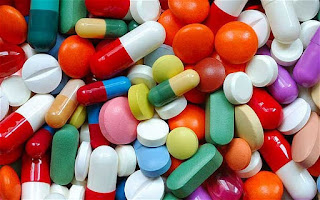Atropine sulfate
Trade name: atropine
Class:
Cholinergic blocking agent
Pregnancy: (Category C)
Action: It is a parasympatholytic agent which
cause relaxation of smooth muscles & inhibition of secretary glands Uses:
• Adjunct in peptic ulcer treatment.
• Irritable bowel syndrome.
• Treatment of spastic disorders of biliary tract.
• During anesthesia to control salivation & bronchial
secretions.
• Parkinsonism.
• Anti-arrhythmic
(prophylaxis).
• Prophylaxis and treatment of toxicity due to cholinesterase
inhibitor including organophosphate pesticides.
•
Ophthalmologic treatment of
uveitis. Dose
Bradydysrhythmia :Adult
0.5-1 mg IV may repeated at 5 min intervals
until desired rate achieved " max 0.03- 0.04 mg / kg
" Pediatric 0.02 mg/kg " min dose 0.1 mg ,
max single dose 0.5 mg for a child and 1
mg for an adolescent.
Asystole
& PEA: Adult 1 mg IV may repeated every 3-5 min "max
0.03- 0.04 mg /
kg, complete vagal block"
Pediatric unknown efficacy.
Endotracheal route: 30
mic/kg diluted in 5 ml NS
Anticholinesterase
poisoning: Adult 1-2 mg push every 5-15 minutes to dry secretions, no
max dose
Pediatric 0.05 mg/kg/dose every 5-15 min
NB
Possible
paradoxical bradycardia when pushed slowly or
when used at doses less than 0.5 mg
Contraindications:
§
Glaucoma, tachycardia,
myocardial ischemia.
§
Prostate hypertrophy,
myasthenia gravis, paralytic ileus.
§
Mental impairment,
lactation, hepatic disease.
Side effects:
§
Nausea, vomiting, dry
mouth, constipation, heartburn, § dizziness, drowsiness,
headache, insomnia, blurring of vision,
§
Photophobia, flashing,
euphoria, hallucination flushing of the skin.
Nursing
considerations:
§
Check dosage & measure
the drug exactly.
§
Assess for history of
asthma, glaucoma, ulcer... etc.
§
Determine the age of the
client.
§
Frequent mouth care.
§
Assess client for change in
pulse rate.
In case of blurring of vision, assist on ambulating & give safety
measures.



